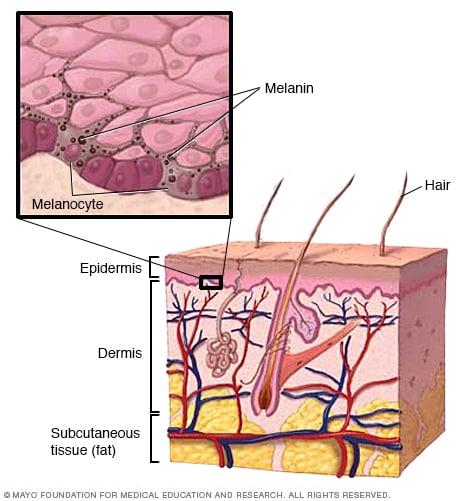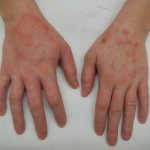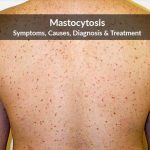Vitiligo (vit-ih-LIE-go) is a disease that causes loss of skin color in patches. The discolored areas usually get bigger with time. The condition can affect the skin on any part of the body. It can also affect hair and the inside of the mouth.
Normally, the color of hair and skin is determined by melanin. Vitiligo occurs when cells that produce melanin die or stop functioning. Vitiligo affects people of all skin types, but it may be more noticeable in people with brown or Black skin. The condition is not life-threatening or contagious. It can be stressful or make you feel bad about yourself.
Treatment for vitiligo may restore color to the affected skin. But it doesn’t prevent continued loss of skin color or a recurrence.
Causes
 S box
S box
Vitiligo occurs when pigment-producing cells (melanocytes) die or stop producing melanin — the pigment that gives your skin, hair and eyes color. The involved patches of skin become lighter or white. It’s unclear exactly what causes these pigment cells to fail or die. It may be related to:
- A disorder of the immune system (autoimmune condition)
- Family history (heredity)
- A trigger event, such as stress, severe sunburn or skin trauma, such as contact with a chemical
Symptoms
Vitiligo signs include:
- Patchy loss of skin color, which usually first appears on the hands, face, and areas around body openings and the genitals
- Premature whitening or graying of the hair on your scalp, eyelashes, eyebrows or beard
- Loss of color in the tissues that line the inside of the mouth and nose (mucous membranes)
Vitiligo can start at any age, but usually appears before age 30.
Depending on the type of vitiligo you have, it may affect:
- Nearly all skin surfaces. With this type, called universal vitiligo, the discoloration affects nearly all skin surfaces.
- Many parts of the body. With this most common type, called generalized vitiligo, the discolored patches often progress similarly on corresponding body parts (symmetrically).
- Only one side or part of the body. This type, called segmental vitiligo, tends to occur at a younger age, progress for a year or two, then stop.
- One or only a few areas of the body. This type is called localized (focal) vitiligo.
- The face and hands. With this type, called acrofacial vitiligo, the affected skin is on the face and hands, and around body openings, such as the eyes, nose and ears.
It’s difficult to predict how this disease will progress. Sometimes the patches stop forming without treatment. In most cases, pigment loss spreads and eventually involves most of the skin. Occasionally, the skin gets its color back.
Treatment
The choice of treatment depends on your age, how much skin is involved and where, how quickly the disease is progressing, and how it’s affecting your life.
Medications and light-based therapies are available to help restore skin color or even out skin tone, though results vary and are unpredictable. And some treatments have serious side effects. So your health care provider might suggest that you first try changing the appearance of your skin by applying a self-tanning product or makeup.
If you and your health care provider decide to treat your condition with a drug, surgery or therapy, the process may take many months to judge its effectiveness. And you may have to try more than one approach or a combination of approaches before you find the treatment that works best for you.
Even if treatment is successful for a while, the results may not last or new patches may appear. Your health care provider might recommend a medication applied to the skin as maintenance therapy to help prevent relapse.
The list of some Hereditary Angioedema medicine:



